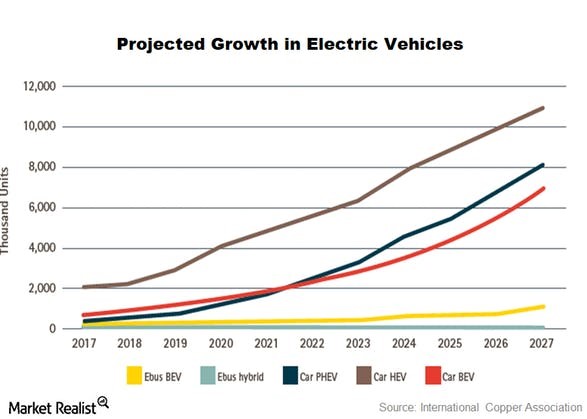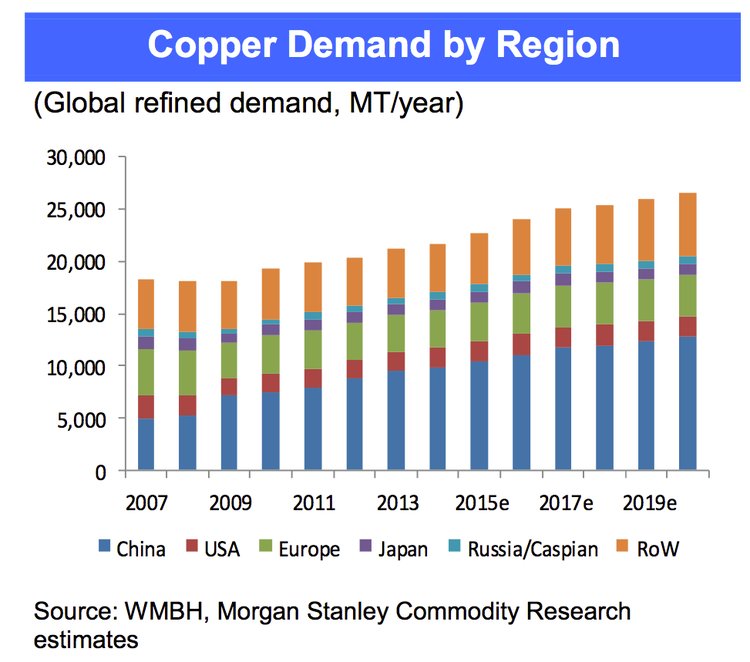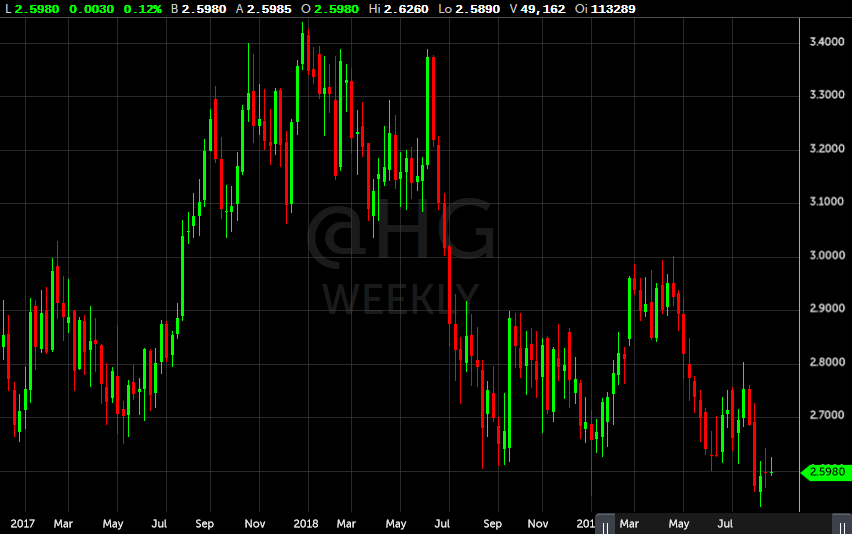Will Copper Prices Live Up To Expectations With Supply Gap?
A good case can be made for the copper market to be a star performer among commodities in the next few years. However, you wouldn’t know it by the price action lately. Copper futures prices are down about 25% from 2018 and have lost about half their value since the all-time high set in 2011. Copper has actually resembled the overall trend in commodity prices during these periods. With the expansion of production for electric vehicles, some analysts believe there will be a substantial supply deficit in copper in the near future. However, there are more variables to the analysis than that.
Electric Vehicles and Demand for Copper
I have read a lot about how the growth in electric vehicle production is going to push demand for copper well beyond production in the coming years. Matt Badiali at Banyan Hill Research recently stated in Barrons that the world will need to produce 5 million metric tons of copper per month by 2030—about 2.5 times more than it will produce this year—in order to meet projected demand from the electric-vehicle industry.

The trend has certainly been higher for production of electric vehicles and it can’t be ignored. The question is how much growth will occur. There have been many stops, starts and sputters in the auto industry throughout the years. Gas prices are also a big variable going forward. The U.S. is pumping out enough oil to probably put a cap on major price increases for the foreseeable future. However, having a more environmentally friendly vehicle has also been a driving force for many electric vehicle consumers. Will that continue or will it dissipate over time? Or, will alternatives like liquid natural gas, fuel cells or biodiesel become the alternative the auto industry gravitates toward in the next 10 years?
China Demand for Copper
It is difficult to analyze the copper market without considering China in the equation. China accounts for about 50% of global demand and their economy can sometimes set the tone for copper prices. This has been a troubling sign for the copper market recently, as their economy has been weakening and the trade talks with the U.S. have raised many questions for copper demand. The trade talks and tariffs are an obstacle for copper prices to move higher. Thus far, the trade issues are signaling less demand and uncertainty, which has been dragging prices lower.
There are two ways to look at the China trade issue. The first is that the negative aspect has been discounted by the market and any mildly positive trade deal with China would be a very positive development. Demand for copper should increase under this scenario as trade should increase between the two countries and economic prospects should increase as well. The quicker that a meaningful deal is reached, the better it will be for the markets.

The other side of this could be negative for copper demand and prices. This could be a scenario where the trade talks are prolonged and / or they become more heated. This could curtail trade and weaken both economies. Not to mention that it would likely have an impact on the global economy. China could shelf or delay construction projects and other uses for copper would suffer with the economic uncertainty. And maybe clean energy and electric cars wouldn’t be a high priority, although they have certainly entrenched a solid path down this road.
Will the Supply Deficit in Copper Materialize?
The investment bank Jeffries is forecasting a 1 million metric ton deficit in 2024 without copper miners expanding their production capabilities. Goldman Sachs has a similar projection. The deficit could grow to 4 million metric tons by 2028. This, of course, could lead to a tight supply situation as annual world copper production is about 18 million metric tons. These forecasts likely took into consideration the production capabilities of miners and economic conditions around the world. It would seem that miners would be able to expand production to fill in this supply gap, but that might not be likely. Another interesting note is that the U.S. delivers about as much copper from recycling each year as it does from mining. The U.S. can also produce enough copper domestically to meet its demand.
Higher prices tend to lead to more production and lower prices tend to cause producers to produce less. This is a generalization, but it is the typical cycle that happens time and again in commodities. There are significant capital costs to open new mines and even to ramp up production at current mines. CEOs and CFOs of mining companies like Freeport-McMoRan (FCX) and Rio Tinto (RIO) typically don’t like to invest heavily in expansion during periods of falling prices, which has been the case in recent years. It remains to be seen how much production will increase in the coming years, as it could be considered fairly risky by copper producers to do so in the current environment.

It could be very interesting if prices continue to decline and producers curtail production or at least don’t expand production. The supply gap could be even greater if the forecasted demand materializes.
Copper Analysis Summary
The first question many investors will probably ask is why aren’t prices going higher if this situation isn’t exactly new to the markets? The answer to that is long-term forecasts can take a long time to materialize. The reaction in market prices isn’t a smooth ride and often takes longer to happen than expected. Also, there are many issues facing the copper market that are dragging on prices. Not to mention that it is not carved in stone that there will be a supply gap in the coming years and forecasts are not always correct.
The trend has been down with most commodity prices and the overwhelming reason for that might be due to concerns for weaker global demand for commodities. European economies are weakening and some are flirting with deflation. China and the U.S. are in a “trade war” and there are concerns of those economies getting weaker. That is the current situation. It could fall more negative or get much better. That might be what determines prices direction in the future.
The good thing is that copper prices have come down quite a lot. The supply / demand situation is fairly positive for higher prices and a turn higher in the global economy could setup a much tighter supply situation in the coming years. As long as China and the U.S. economies are stabilized or improve and the electric vehicles market continues to accelerate its growth, copper may likely see higher prices ahead.
Disclosure: Past performance is not indicative of future results. Futures trading is not suitable for all investors. The risk associated with futures trading is substantial. Only risk capital ...
more


